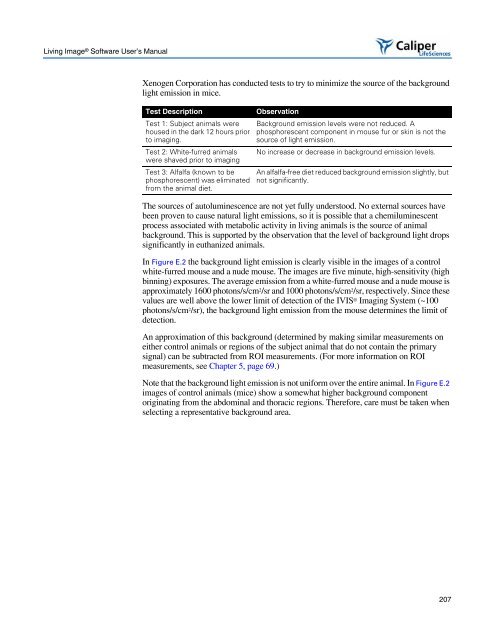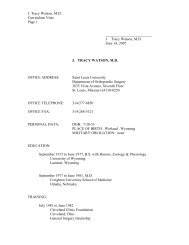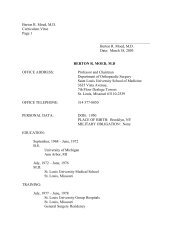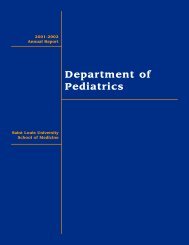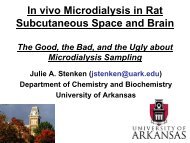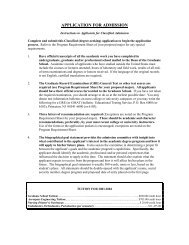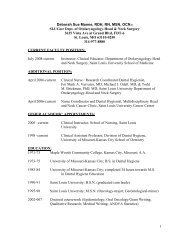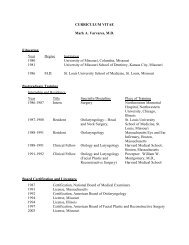Living Image 3.1
Living Image 3.1
Living Image 3.1
Create successful ePaper yourself
Turn your PDF publications into a flip-book with our unique Google optimized e-Paper software.
<strong>Living</strong> <strong>Image</strong> ® Software User’s Manual<br />
Xenogen Corporation has conducted tests to try to minimize the source of the background<br />
light emission in mice.<br />
Test Description Observation<br />
Test 1: Subject animals were<br />
housed in the dark 12 hours prior<br />
to imaging.<br />
Test 2: White-furred animals<br />
were shaved prior to imaging<br />
Test 3: Alfalfa (known to be<br />
phosphorescent) was eliminated<br />
from the animal diet.<br />
Background emission levels were not reduced. A<br />
phosphorescent component in mouse fur or skin is not the<br />
source of light emission.<br />
No increase or decrease in background emission levels.<br />
An alfalfa-free diet reduced background emission slightly, but<br />
not significantly.<br />
The sources of autoluminescence are not yet fully understood. No external sources have<br />
been proven to cause natural light emissions, so it is possible that a chemiluminescent<br />
process associated with metabolic activity in living animals is the source of animal<br />
background. This is supported by the observation that the level of background light drops<br />
significantly in euthanized animals.<br />
In Figure E.2 the background light emission is clearly visible in the images of a control<br />
white-furred mouse and a nude mouse. The images are five minute, high-sensitivity (high<br />
binning) exposures. The average emission from a white-furred mouse and a nude mouse is<br />
approximately 1600 photons/s/cm 2/sr and 1000 photons/s/cm 2/sr, respectively. Since these<br />
values are well above the lower limit of detection of the IVIS ® Imaging System (~100<br />
photons/s/cm 2/sr), the background light emission from the mouse determines the limit of<br />
detection.<br />
An approximation of this background (determined by making similar measurements on<br />
either control animals or regions of the subject animal that do not contain the primary<br />
signal) can be subtracted from ROI measurements. (For more information on ROI<br />
measurements, see Chapter 5, page 69.)<br />
Note that the background light emission is not uniform over the entire animal. In Figure E.2<br />
images of control animals (mice) show a somewhat higher background component<br />
originating from the abdominal and thoracic regions. Therefore, care must be taken when<br />
selecting a representative background area.<br />
207


